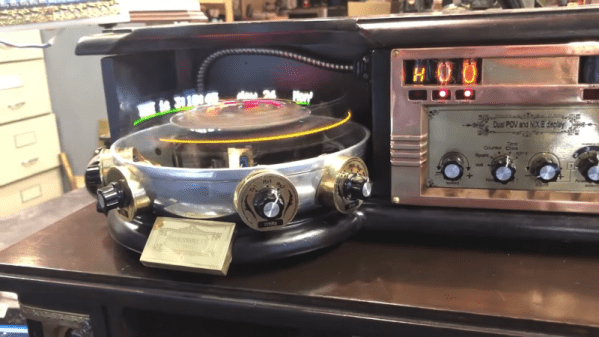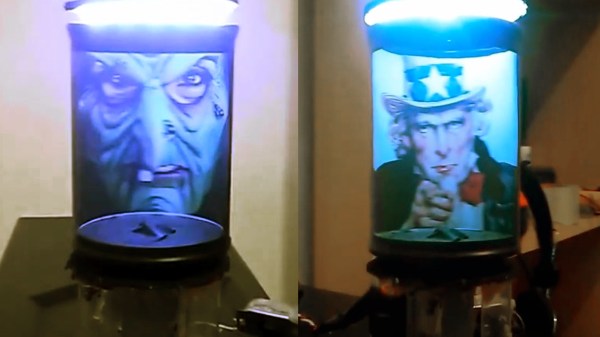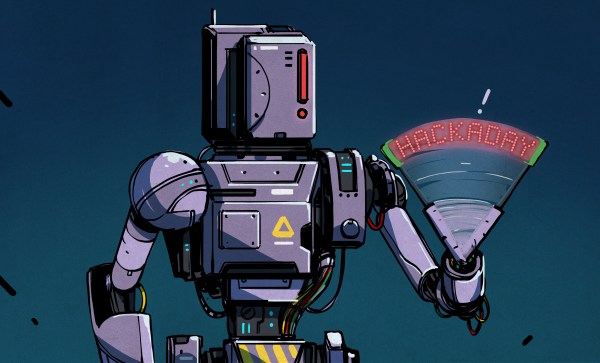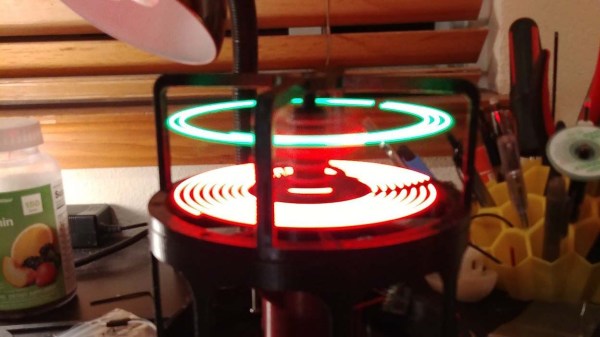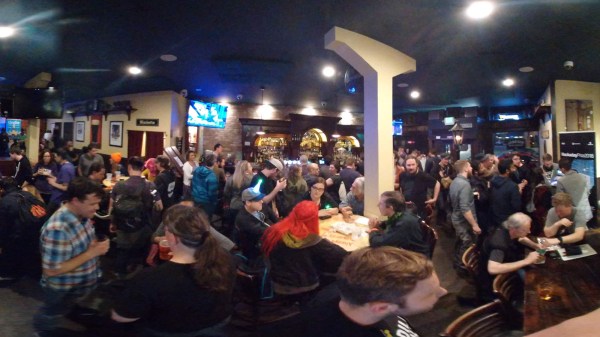What’s a tachyscope? According to [Daniel Ross], it is an animated display from an alternate timeline circa 1880. The real ones, of course, didn’t have LEDs and microcontrollers. The control unit looks like an old-timey radio, complete with Nixie tubes. The spinning part has blue and white LEDs, each accepting data from one of two serial ports. You can select to see data from one port, the other, or both. You can see the amazing contraption in the video below.
The LEDs are surface mounted and placed inside a glass test tube. Each display has its own processor. The project appears to have a PCB, but it is just a piece of fiberglass with a color print on top of it and holes drilled with a rotary tool. The board has no actual conductors — everything is point-to-point wiring. The base of the unit is old cookware. The slip ring is pretty interesting, too. It uses an old video tape head, D-cell batteries cut up, and contacts from a relay.
You might remember [Daniel] from his steampunk Victorian computer project, including a punk teletype and a magic eye tube. If you want some theory on these kinds of displays, we can help. If you just want a simple display, it doesn’t have to cost much.
Continue reading “Dual Channel POV Display Also Has Nixie Tubes”

